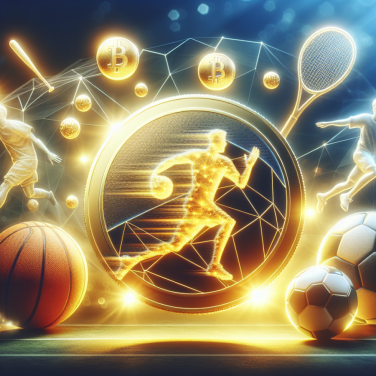Redefining the Game: The Evolution of Modern Athletics through Sports Technology
Changes in Training Regimes
The advent of sports technology has dramatically changed the way athletes train and prepare for competitions. Advanced tools provide detailed insights into an athlete's physical condition and performance, enabling trainers to tailor training programs to an individual's unique abilities and limitations. For instance, heart rate monitors and GPS technology allow coaches to track an athlete's body responses in real time, providing crucial data about stamina levels and fatigue limits.
One of the more innovative technologies in sports is motion analysis software. This allows detailed analysis of an athlete's form and technique, which can highlight areas for improvement that might not be visible to the naked eye. By understanding every movement and muscle engagement, athletes can drastically increase their efficiency and performance.
Preventing Injuries
Sports technology also plays a crucial role in preventing injuries and promoting athlete health. Wearable devices such as smart vests offer real-time tracking of vital signs, providing invaluable data for monitoring an athlete’s health and managing their workload. Anomalies in vital sign readings can alert medical professionals to potential health issues, reducing the risk of severe injuries.
Similarly, advancements in protective equipment such as helmets, mouth guards, and pads allow for improved safety during gameplay. Using computer modeling and simulation technologies, these items are now designed precisely for maximum impact absorption, reducing the possibility of concussion or other severe injuries.
Data Analysis and Strategy Planning
The modern athletic world is all about data. Coaches and sports teams are increasingly turning to sports analytics and big data technology to understand opponents' tactics, evaluate team performance, and strategize for games. Advanced software analyses historical and real-time match data to provide detailed insights into patterns and trends in an opponent's gameplay. This helps teams devise more effective strategies, ultimately enhancing their chances of winning.
Further, the use of virtual reality in sports is not just limited to athlete training. It's also a fantastic tool for helping teams strategize. By simulating different gameplay scenarios, teams can plan and rehearse specific plays, strengthening their game preparation.
Enhancing Fan Experience
It's not just the athletes and teams that are benefitting from these changes. Modern sports technology also dramatically enhances the fan experience. With advancements such as instant replays, 360-degree camera angles, and virtual reality experiences, fans can become more engaged in the action than ever before. They can now look at the game from a player’s or referee’s perspective, which gives them a higher level of appreciation for the sport.
Read also:
Unveiling the Exciting World of Ice Hockey: Rules, Strategies and Histories
Transforming Athletic Performance: The Influence of Innovative Sports Technology
Sports technology has now advanced to a level where it can create a significant difference in the performance of athletes in various disciplines. It plays a crucial role in player safety, performance optimization, injury prediction, rehabilitation, and several other areas.
Performance and health optimization have become top priorities for athletes the world over. Smart fabrics and wearable technology elevate physical performance by monitoring fundamental health parameters. Garments equipped with sensors can monitor heart rate, respiration, muscle engagement, and even stress levels in real time. These biometrics provide invaluable data for athletes and coaches, allowing them to refine training programs and strategies.
Furthermore, the empathetic capability of technology in sports goes beyond performance tracking. Advanced, internet of thing guided equipment like smart footballs, golf clubs, or running shoes can provide significant input into a player's techniques. Athletes can quickly understand where their strategy is lacking and work towards improving their game. Virtual Reality (VR) and Mixed Reality (MR) technologies are also revolutionizing how athletes train. They can create simulated game situations for the athletes to practice, improving reaction times, decision-making abilities and strategy formulation processes.
A critical area of application for sports technology is injury prediction and prevention. Wearable sensor technology, coupled with machine learning algorithms, can monitor biometrics to predict when an athlete may be likely to sustain an injury by identifying potential red flags in an athlete's performance data. This has led to incredible strides in preserving athlete longevity while maintaining peak performance levels. Similarly, high-tech materials used in sports gear can help protect athletes from potential injuries.
Sports technology has also revolutionized the rehabilitation and recovery process in sports. Digital health systems and AI-driven rehabilitation tools like cryotherapy units and electric stimulation devices have made injury recovery more manageable and streamlined. With the aid of machine learning algorithms, a personalized recovery and rehabilitation plan can be created for each athlete, utilizing real-time performance and health data.
Moreover, sports technology has also proven beneficial in team management and strategy formulation. Coaches can now track real-time data like player fatigue, ball speed, distance covered, and other critical parameters during a match. This enables them to make informed decisions, regarding substitutions and tactics, based on factual data rather than gut feelings.
In conclusion, innovative sports technology has significantly influenced and transformed athletic performance. By providing valuable, precise, and real-time data, technology enables athletes and coaches to refine their strategies, maximize performance, prevent injuries, and add a new level of sophistication to the competitive world of sports.




